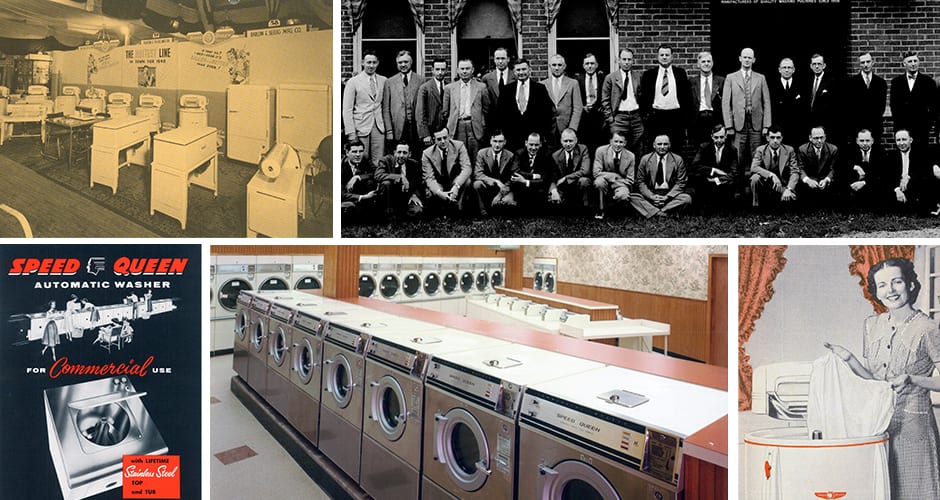We recently started a hunt to find the oldest Speed Queen machine in operation—go here to check out some interesting stories and photos—and it got us thinking about the history of laundry.
And it turns out, keeping clothing clean has a fascinating past. From centuries-old laundromats to 100-year-old washing machines, there was a lot more to the history of washing clothes than we thought.
Ancient Roman Laundromats
While you might think dropping your clothes off at the dry cleaners is a 20th century invention, outsourcing this household task goes all the way back to ancient Rome.
Public washers were called Fullones, who served as both the people doing the washing and, in some ways, as the washing machines themselves. Clothing—most of it made of wool—was placed in large tubs where the washing process resembled stomping on grapes. Except, in this case, stepping on the clothes released dirt.
Once the garments were clean, they were hung out to dry and then brushed and carded to raise the nap. To help keep them white, they were then hung on baskets filled with sulfur or rubbed with a white clay.
Beating Clothes with Bats
Medieval Europeans didn’t rely on public cleaning options. Using a combination of washing bats, scrubbing boards and the local river—even when that river was frozen—they would literally beat the dirt out of their clothing.
And while today we might throw a load of laundry in daily or at least do several loads a week, back then it was common to accumulate a pile of clothing over weeks or months and then wash it all at once. It simply took too long to wash and dry everything.
Also, soap wasn’t always a part of the early history of washing clothes, though it might get used for spot cleaning. Instead, clothing was soaked in lye, a process called bucking, that was meant to whiten and clean garments.
Over time, the river was gradually replaced by large tubs of water and washboards. And it once again became more common to send your laundry out for cleaning.
The Washing Machine is Born
If you had to speculate how old washing machines are, what would you guess? One hundred years? One hundred fifty? It turns out that the first washing machine was designed by H. Sidgier of Great Britain all the way back in 1782. Of course, it didn’t look much like what we think of as a washing machine today.
But you might be surprised to learn that even the modern electric washer is probably an older part of the history of laundry than you might guess. In fact, the first one was invented around 1900 and the first one to market—called Thor—came out in 1907.
Unlike today’s washing machines which agitate, release detergent at set times and more, the only thing the original washer did was rotate the tub. As it turns out, the tub wasn’t watertight and the motor wasn’t protected, which led to both short-circuits and shocks.
And very importantly for us, one year later, in 1908, Joe Barlow and John Seelig founded Barlow & Seelig Manufacturing, a company that you know today as Speed Queen.
After that, it seems like every decade brought new advancements in the history of laundry machines:
- 1915: Speed Queen introduced the first multidirectional wringer.
- 1927: The spin function was incorporated for the first time.
- 1937: The first machine that could wash, rinse and spin in one cycle was patented.
- 1950s: Automatic washing machines that control everything from water temperature to cycle times were introduced and started to become more common in laundromats and eventually households.
- 1980s: More electronic components like microprocessors were incorporated, allowing the machines to consume less water and electricity.
- 1997: The first wool cycle was introduced—something the ancient Romans probably would have loved.
Share your Washing History
Our guess is that you have a laundry history of your own, especially if you own a Speed Queen. Visit our legacy page to see pictures and stories of machines that have been providing people with clean laundry for years—and even decades. And then tell us your story.


